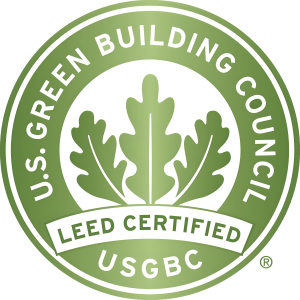How LEED v4.1 addresses embodied carbon
The U.S. Green Building Council’s vision for materials and resources in the built environment comprises three strategies: reduce embodied carbon; protect human and ecological health; and advance the circular economy. Each of these strategies requires continuous optimization and robust data to make informed decisions. Reducing embodied carbon is a key consideration for buildings and spaces, and by focusing on building structural systems, enclosures, products and materials, project teams can make a significant and positive impact.
The LEED rating system takes a holistic approach to evaluating building products and materials. The Materials and Resources (MR) credit category in LEED v4.1, the latest update to the rating system, is an important place to start. The requirements reward building reuse; life-cycle analysis in the form of whole-building life cycle assessment and environmental product declarations (EPDs); material ingredient reporting and optimization; responsible sourcing of raw materials; and waste reduction and management. These credits incentivize real reductions in embodied carbon at multiple scales throughout the building life cycle.
With LEED v4.1, USGBC made changes to credit requirements that intend to ensure leadership, increase achievability, expand the market for LEED and measure performance. Those goals are reflected in the MR credits. Consider these credits when addressing embodied carbon.
Link Here: https://www.usgbc.org/articles/how-leed-v41-addresses-embodied-carbon



